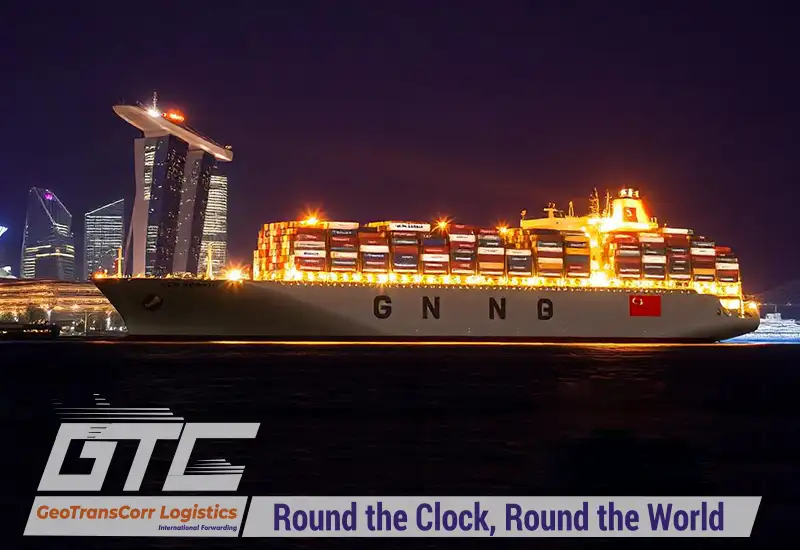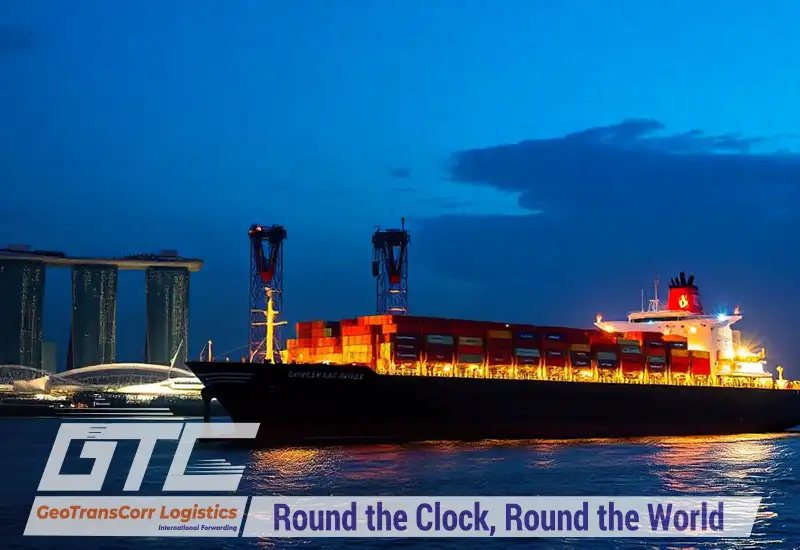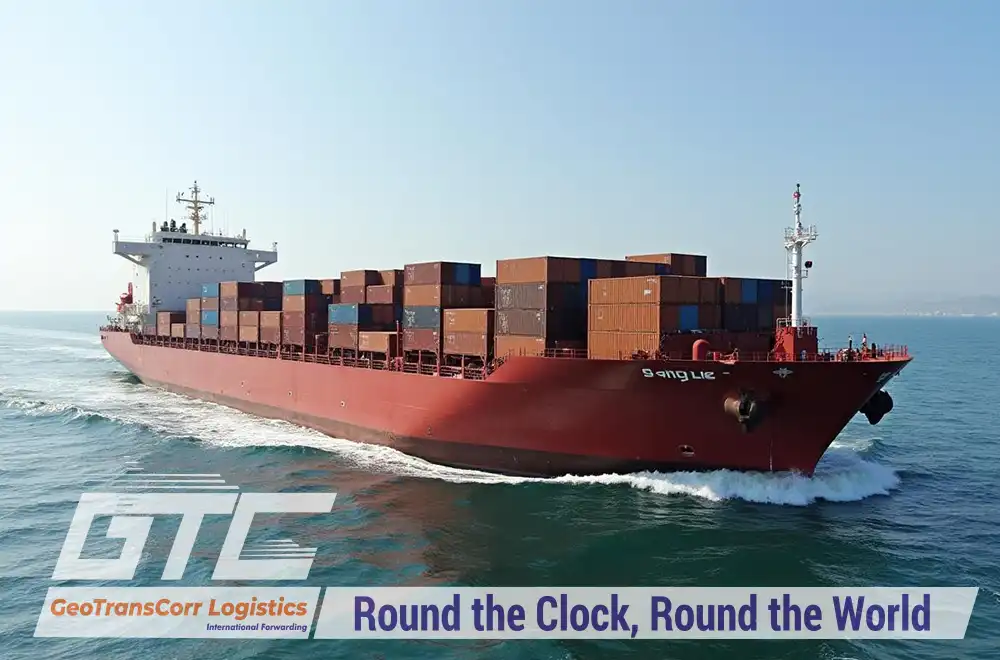Sea freight plays a crucial role in global trade, facilitating the movement of vast quantities of goods across oceans. One prominent and highly utilized trade route is from China to Singapore, a vital corridor in Asia’s bustling trade network. Choosing sea freight as the mode of transportation for shipping goods between China and Singapore offers numerous advantages.
This blog post will explore the various aspects of sea shipping from China to Singapore. This comprehensive guide will provide valuable insights into sea freight from China to Singapore.
China’s key ports for shipping to Singapore
China’s extensive coastline is home to some of the world’s busiest and most advanced ports. These ports serve as vital gateways for the country’s vast export activities. When shipping from China to Singapore, due to its strategic location, high capacity, and advanced infrastructure, several major ports are usually used. These ports are:
- Port of Shanghai: The Port of Shanghai is the largest and busiest container port worldwide. Located at the mouth of the Yangtze River, it serves as a critical hub for trade between China and the rest of the world. Its extensive facilities and advanced logistics make it a preferred choice for many exporters.
- Port of Shenzhen: Situated in the Pearl River Delta, the Port of Shenzhen is another major port that plays a crucial role in China’s export activities. It comprises several smaller ports, including Yantian, Shekou, and Chiwan, which collectively handle a significant volume of container traffic.
- Port of Ningbo-Zhoushan: The Port of Ningbo-Zhoushan, located in Zhejiang province, is known for its deep-water berths and extensive cargo handling capabilities. It is a key port for containerized and bulk cargo, making it an important player in China’s maritime trade.
- Port of Guangzhou: The Port of Guangzhou, located in the Pearl River Delta, is one of the oldest and most well-established ports in China. It serves as a major hub for both international and domestic trade, handling a wide variety of cargo types.
- Port of Qingdao: Located in Shandong province, the Port of Qingdao is a major gateway for trade with Northeast Asia. It is known for its efficient operations and extensive container handling facilities.

Singapore’s key port for shipping to China
Singapore’s strategic location at the crossroads of major shipping routes has made it a global maritime hub. The Port of Singapore is renowned for its efficiency, advanced infrastructure, and seamless connectivity to international trade networks. The general information of this port is as follows:
- Port of Singapore: The Port of Singapore is one of the busiest and most efficient ports worldwide. It offers comprehensive port services, including container handling, transshipment, and logistics support. The port’s advanced facilities and strategic location make it an ideal destination for goods shipped from China.
Common Shipping Routes Between China and Singapore
The shipping route from China to Singapore follows a direct path through the South China Sea. This route leverages the strategic locations of key ports in both countries to facilitate efficient and timely transportation of goods. Here are some common routes:
- Shanghai to Singapore: Ships departing from the Port of Shanghai usually travel southward through the East China Sea and the Taiwan Strait before entering the South China Sea. The journey continues directly to the Port of Singapore, leveraging major shipping lanes that are well-established and heavily trafficked.
- Shenzhen to Singapore: Vessels from the Port of Shenzhen follow a similar route, moving through the South China Sea. Given Shenzhen’s proximity to the South China Sea, this route is one of the most direct and efficient shipping goods to Singapore.
- Ningbo-Zhoushan to Singapore: Ships from Ningbo-Zhoushan navigate through the East China Sea and the Taiwan Strait, entering the South China Sea for a direct path to Singapore. This route takes advantage of Ningbo-Zhoushan’s extensive deep-water facilities, which enable the handling of large container ships.
- Guangzhou to Singapore: The route from Guangzhou typically involves navigation through the South China Sea, leveraging the port’s strategic location in the Pearl River Delta to facilitate smooth and efficient shipping operations.
- Qingdao to Singapore: Vessels from the Port of Qingdao travel through the Yellow Sea and the East China Sea, passing through the Taiwan Strait before entering the South China Sea on their way to Singapore.

Transit Time Between China and Singapore
The average transit time for sea freight from China to Singapore varies depending on the specific ports of departure and arrival, the shipping company’s schedule, and the type of service chosen (e.g., direct or with stops). Generally, transit times range from 5 to 10 days. When planning shipments, it is important to consider seasonal variations, weather conditions, and potential delays at ports.
Analyzing the Trade Dynamics Between China and Singapore
According to OEC, over the past five years, Singapore’s exports to China have shown remarkable growth, increasing at an annualized rate of 76%, from $3.15 billion in 2017 to $53.1 billion in 2022.
In 2022, Singapore exported goods worth $53.1 billion to China. The primary exports included:
- Integrated Circuits: $15 billion
- Machinery Having Individual Functions: $5.54 billion
- Ethylene Polymers: $2.69 billion
China’s exports to Singapore have also experienced significant growth, with an annualized rate of 67%, rising from $3.91 billion in 2017 to $50.8 billion in 2022.
In 2022, China exported goods valued at $50.8 billion to Singapore. The main exports were:
- Refined Petroleum: $8.48 billion
- Integrated Circuits: $6.58 billion
- Broadcasting Equipment: $4.65 billion
Comparative Economic Metrics
In 2022, Singapore and China held significant positions in the global trade landscape:
Singapore:
- Ranked 6th on the Economic Complexity Index (ECI) with a score of 1.68
- Ranked 21st in total exports with $379 billion
China:
- Ranked 22nd on the Economic Complexity Index (ECI) with a score of 1.12
- Ranked 1st in total exports with $3.73 trillion
Shipping Process Between China and Singapore
Shipping goods from China to Singapore involves several crucial steps to ensure efficient and timely delivery. Understanding this process can help businesses streamline their logistics and avoid potential delays. Here is a comprehensive guide to the shipping process:
- Booking and Documentation
- Step 1: Choose a Freight Forwarder
- Step 2: Obtain Shipping Quotes
- Step 3: Confirm Booking
- Step 4: Prepare Documentation
- Loading and Departure
- Step 5: Cargo Pickup
- Step 6: Cargo Consolidation (if LCL)
- Step 7: Customs Clearance in China
- Step 8: Loading onto Vessel
- Step 9: Vessel Departure
- Transit and Tracking
- Step 10: Monitor Shipment
- Step 11: Communicate with Freight Forwarder
- Arrival and Unloading
- Step 12: Port Arrival in Singapore
- Step 13: Customs Clearance in Singapore
- Customs Clearance and Delivery
- Step 14: Customs Inspection
- Step 15: Payment of Duties and Taxes
- Step 16: Cargo Release
- Step 17: Final Delivery
- Post-Delivery
- Step 18: Review and Feedback
- Step 19: Record Keeping
By following these steps, businesses can ensure a smooth and efficient shipping process from China to Singapore.

Tips for Efficient Sea Freight Between China and Singapore
To ensure efficient sea freight shipping from China to Singapore, it is crucial to choose a reliable freight forwarder who specializes in this route.
Proper packaging and labeling of goods, along with accurate and complete documentation, are essential to avoid delays and ensure smooth customs clearance.
Regularly tracking the shipment and maintaining clear communication with the freight forwarder can help address any issues promptly.
Additionally, understanding and complying with both Chinese and Singaporean import/export regulations can prevent unnecessary complications and ensure timely delivery.
Conclusion
Efficient sea freight shipping from China to Singapore is vital for businesses seeking cost-effective and reliable logistics solutions. By understanding the shipping process, selecting a dependable freight forwarder, and ensuring proper documentation and communication, businesses can streamline their operations and enhance their supply chain efficiency. As global trade continues to grow, leveraging the expertise of a seasoned freight forwarder will remain a key factor in achieving successful and timely deliveries.






